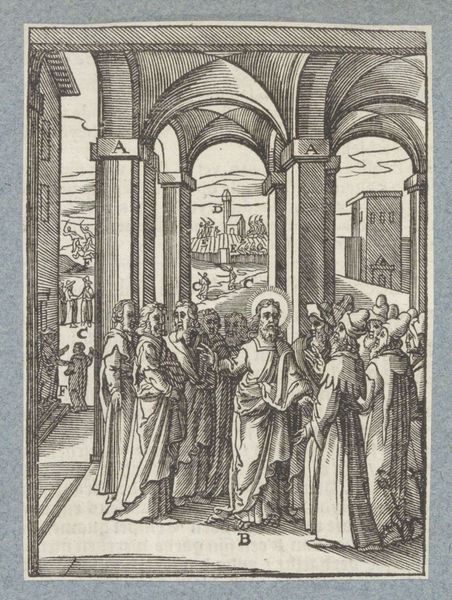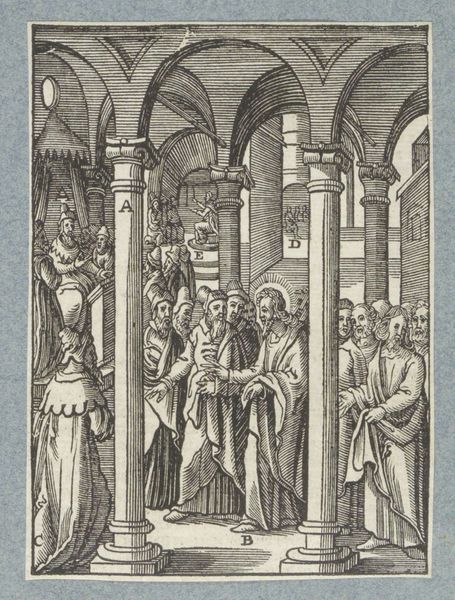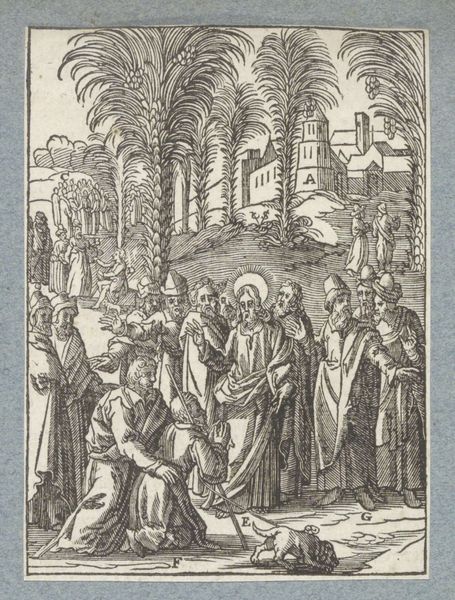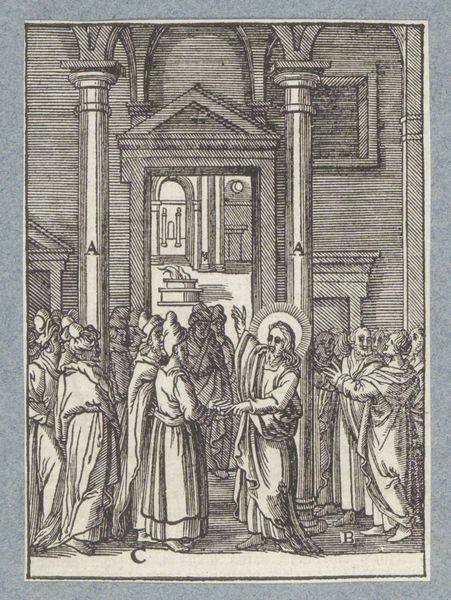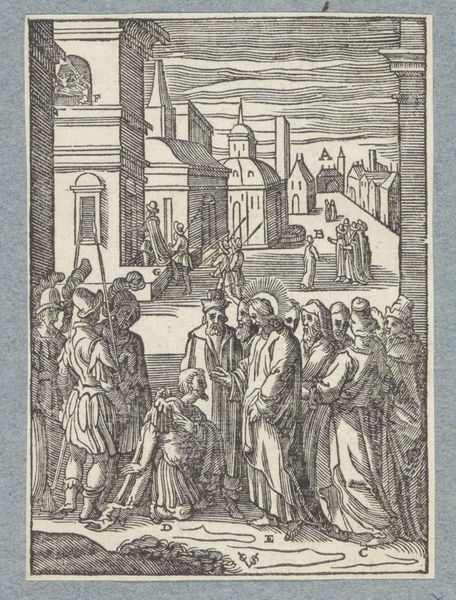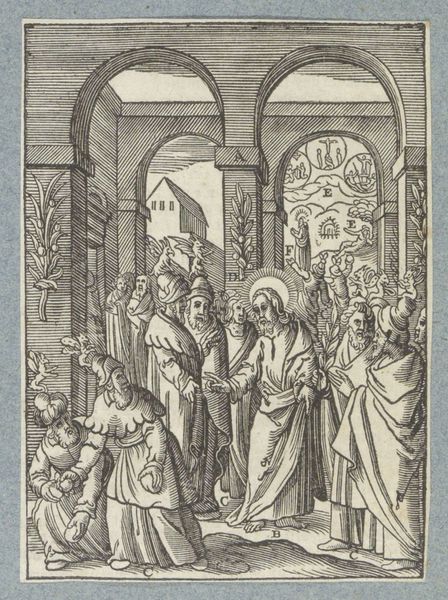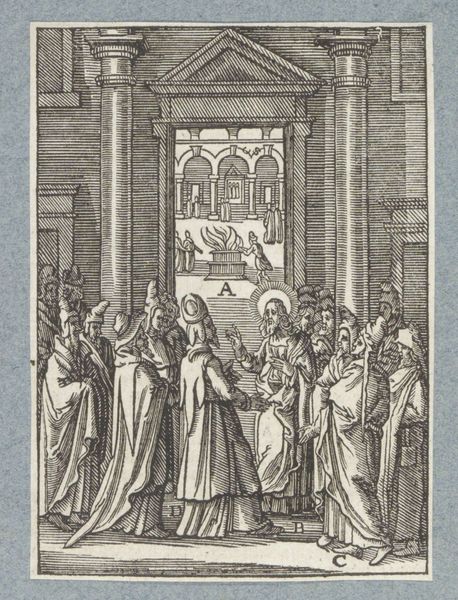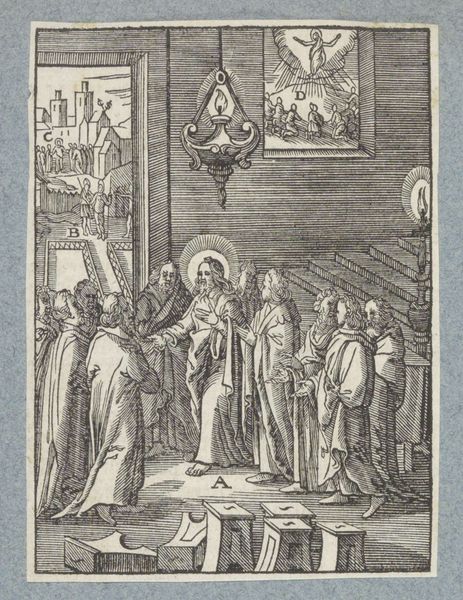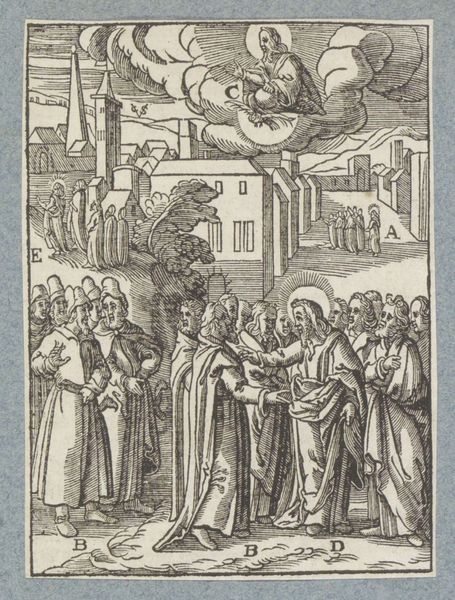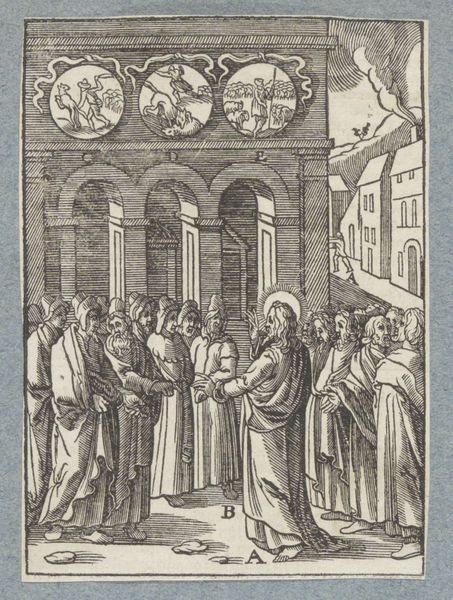
print, engraving
#
narrative-art
#
baroque
# print
#
figuration
#
history-painting
#
engraving
Dimensions: height 110 mm, width 73 mm
Copyright: Rijks Museum: Open Domain
Curator: This is "Christ before Annas," an engraving dating to 1629 by Christoffel van Sichem II, currently held at the Rijksmuseum. What are your first thoughts? Editor: The cross-hatching is incredible. The density creates a stark and dramatic feel despite the image's small size. It’s a claustrophobic scene; you can almost feel the weight of the architectural setting pressing down. Curator: Absolutely. Consider how this engraving circulated as a relatively affordable, mass-produced object. The materiality of the print allows the Passion narrative to disseminate across various social strata, democratizing access to religious imagery, even becoming enmeshed with early forms of commodity exchange. Editor: Interesting how Sichem uses this medium, typically associated with reproducibility, to represent such a loaded scene in religious history. Looking at the lines themselves, you see the intense labor required for this image production. Each stroke bears a relationship to both the divine narrative represented and to the labor required for production and distribution. Curator: And in terms of narrative, the choice of depicting Christ before Annas—rather than, say, Pilate—places emphasis on Jewish culpability in his condemnation, echoing contemporary prejudices. You also see in the background symbolic visual allegories that tie his immediate trials to his coming resurrection. Editor: It is unsettling to see such blatant indications of bias embedded into the piece, and to realize its implications and reverberations through society. You do make a great point, though; this medium did spread its meaning far and wide into new contexts, where its message took root and flourished. Curator: The social context is unavoidable, as it influenced the image itself as much as the image influenced society. Consider the economics that fueled the creation of this piece, but don’t disregard the way the work then actively participated in shaping the very cultural dynamics from which it emerged. It’s an important distinction when you look at prints and how they disseminate biased interpretations. Editor: Indeed, so many threads intersect here: artistry, theology, materiality, dissemination, societal attitude... Seeing those multiple angles enriches the experience of it. Curator: It's a piece where considering all of these influences is necessary for a more nuanced understanding. Editor: Yes, I think engaging in critical reflection as such illuminates aspects often taken for granted when looking at the piece, deepening my appreciation of it as a whole.
Comments
No comments
Be the first to comment and join the conversation on the ultimate creative platform.
